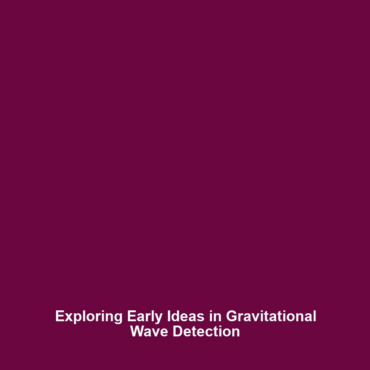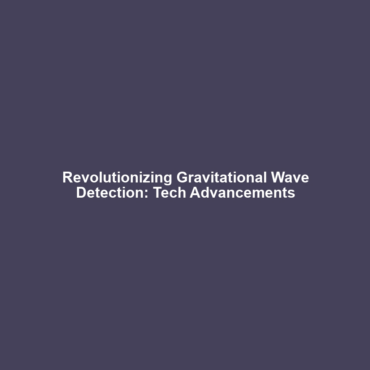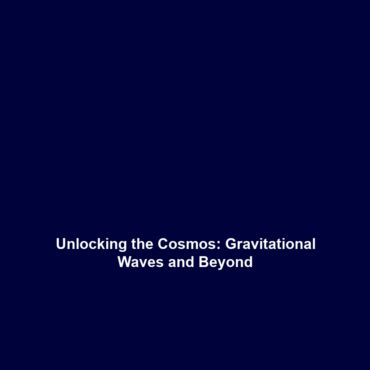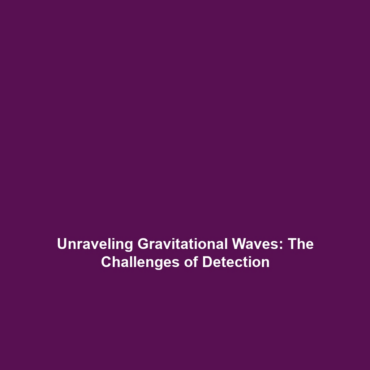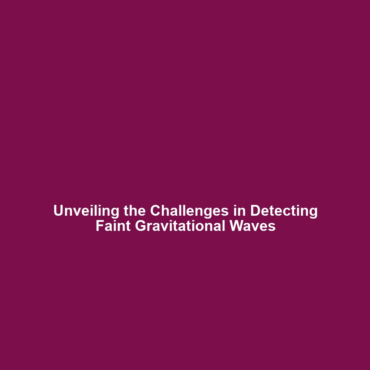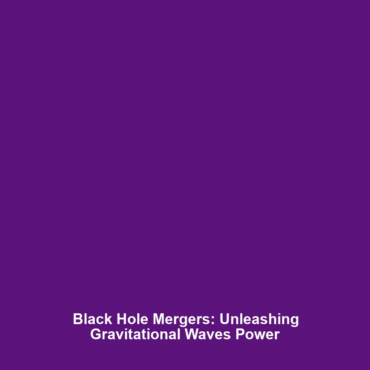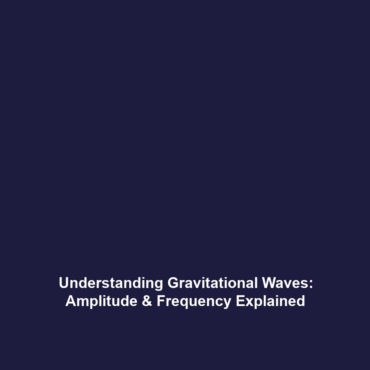Early Attempts and Ideas to Observe Gravitational Waves
Gravitational waves are one of the most exciting phenomena in modern physics, predicting ripples in spacetime caused by massive celestial events. Early attempts and ideas to observe gravitational waves laid the groundwork for groundbreaking discoveries in astrophysics and cosmology. Understanding these early initiatives is significant as they reflect humanity’s quest to comprehend the universe’s intricacies and illustrate the evolution of scientific thought regarding gravitational waves. This article delves into the historical context, the scientific principles involved, and the prospective paths forward in gravitational wave research.
Key Concepts in Observing Gravitational Waves
The study of gravitational waves is fundamentally rooted in Einstein’s theory of general relativity, which describes gravity as the curvature of spacetime caused by mass. Here are several key concepts related to early gravitational wave observations:
- Concept of Spacetime: Gravitational waves represent changes in the very fabric of spacetime, propagating at the speed of light.
- Detection Techniques: Early physicists proposed multiple detection methods, such as laser interferometry, to measure the minuscule distortions in space caused by passing waves.
- Source Identification: Investigators sought to understand potential sources of gravitational waves, including merging black holes and neutron stars.
Applications and Real-World Uses
The early ideas and methods proposed to observe gravitational waves have laid the foundation for various applications within the broader field. These include:
- Astrophysics Research: Understanding cosmic phenomena such as the acceleration of the universe or the dynamics of binary star systems.
- Testing General Relativity: Observing gravitational waves provides a unique method to test the predictions of Einstein’s theory.
- Technology Development: Advancements in laser technology and measurement devices driven by gravitational wave detection initiatives.
Current Challenges in Gravitational Wave Observation
Despite significant progress, challenges remain. Some of the issues in studying early attempts to observe gravitational waves include:
- High sensitivity requirements for detection instruments, necessitating a near-perfect environment to avoid noise.
- Understanding and modeling the astrophysical sources of gravitational waves accurately.
- Limited public awareness and funding for continued research and development.
Future Research and Innovations
The future of early attempts and ideas to observe gravitational waves is promising, with ongoing research aiming to overcome present challenges. Notable ongoing studies include:
- Advanced Laser Interferometers: Projects like LIGO and Virgo are being upgraded to increase sensitivity for detecting more distant events.
- Space-based Detectors: Proposals such as LISA (Laser Interferometer Space Antenna) aim to create a space-based observatory for gravitational waves.
- Interdisciplinary Approaches: Combining gravitational wave astronomy with electromagnetic observations for a more comprehensive understanding of cosmic events.
Conclusion
Early attempts and ideas to observe gravitational waves have profoundly influenced our understanding of the universe. These ventures not only highlight the challenges faced in the field but also underline the technological advancements achieved through gravitational wave research. As scientists continue to innovate and refine their methods, the promise of new discoveries beckons. For those interested in learning more, further exploration of gravitational wave phenomena can lead to exciting insights about the cosmos.
Explore more about gravitational waves here.
